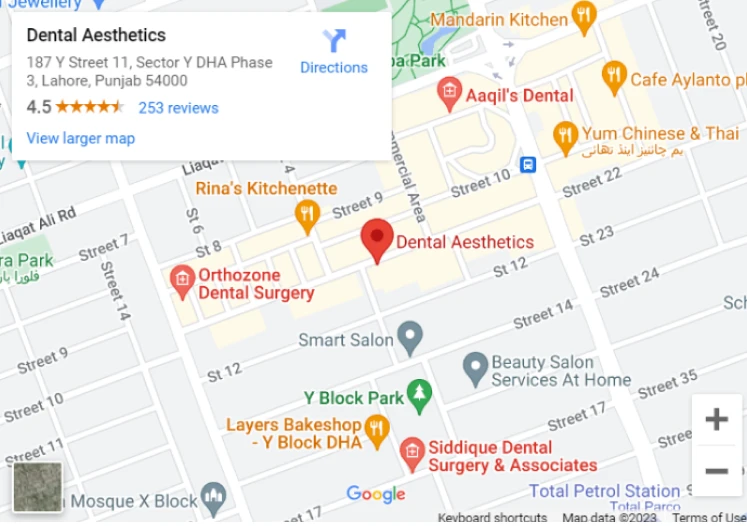Teeth Gap Filling for Adults: What Are Your Options?

April 24, 2025
Introduction
Teeth gaps in adults are a common cosmetic concern. Whether they are a result of genetics, an accident, or even poor dental care, the presence of gaps between teeth can affect your smile and overall confidence. These gaps, also known as diastema, may vary in size, but for many adults, they are a source of embarrassment. Thankfully, modern dentistry provides a wide range of options to address teeth gaps, offering solutions that are both effective and aesthetically pleasing.
While gaps between teeth may not always pose health risks, they can contribute to issues like shifting teeth, bite problems, or increased plaque buildup. Moreover, for adults, the appearance of their teeth plays a crucial role in self-esteem, which is why addressing gaps is often considered essential.
In this article, we’ll explore the different options available for teeth gap filling for adults. From cosmetic procedures like dental veneers and bonding to orthodontic treatments like braces, we’ll provide in-depth information on each solution, including their advantages, drawbacks, and costs.
Why Should Adults Address Teeth Gaps?
While some individuals are comfortable with their teeth gaps, there are several reasons why many adults choose to address them:
Aesthetic ConcernsThe appearance of teeth plays a significant role in how confident we feel about ourselves. Many people opt for teeth gap fillings to achieve a more uniform and attractive smile.
Functional IssuesLarger gaps between teeth can cause bite problems, leading to discomfort or difficulty with chewing. The gaps may also affect speech, making certain sounds harder to pronounce.
Oral HealthGaps between teeth can make it easier for food and plaque to accumulate, potentially leading to tooth decay or gum disease if not addressed.
Understanding Your Options for Teeth Gap Filling1. Dental Veneers: A Cosmetic Solution
What Are Dental Veneers?
Dental veneers are ultra-thin, custom-made shells placed over the front surface of your teeth. They are typically made from porcelain or composite resin and are designed to mimic the natural appearance of teeth. Veneers are an excellent option for addressing small to moderate gaps between teeth.
How Do Veneers Work?The process of getting dental veneers involves several steps:
1. Dental Veneers: A Cosmetic Solution What Are Dental Veneers?Dental veneers are ultra-thin, custom-made shells placed over the front surface of your teeth. They are typically made from porcelain or composite resin and are designed to mimic the natural appearance of teeth. Veneers are an excellent option for addressing small to moderate gaps between teeth.
How Do Veneers Work?The process of getting dental veneers involves several steps:
- Consultation: The dentist evaluates your dental health and discusses your aesthetic goals.
- Tooth Preparation: A small amount of enamel is shaved off the tooth to make room for the veneer.
- Impressions: A mold of your teeth is taken to create custom veneers that fit perfectly.
- Fitting: Once the veneers are ready, they are bonded to your teeth using a special adhesive.
Pros:
- Natural Look: Veneers blend seamlessly with your natural teeth, giving you a perfect smile.
- Durability: Porcelain veneers are strong and long-lasting, often lasting 10-15 years with proper care.
- Stain-Resistant: Porcelain veneers resist stains from coffee, tea, or cigarettes.
Cons:
- Cost: Veneers can be expensive, especially porcelain ones.
- Irreversibility: The enamel removal process is permanent, making it a one-time decision.
The cost of veneers varies depending on factors such as location and the material used. On average, porcelain veneers range from $900 to $2,500 per tooth. Composite veneers are typically less expensive, ranging from $250 to $1,500 per tooth.
2. Dental Bonding: A Quick and Affordable Solution What Is Dental Bonding?Dental bonding is a non-invasive procedure that involves applying a tooth-colored resin material to the gap between teeth. This material is sculpted to match the natural shape of your teeth and then hardened using a special light. Bonding is an excellent option for filling small gaps and is often used for cosmetic improvements in adult teeth.
How Dental Bonding Works- Preparation: No anesthesia is required for dental bonding, as it is a relatively simple and painless procedure.
- Resin Application: The dentist applies the resin to the gap, shaping it to match the tooth’s natural contours.
- Curing: The resin is hardened using a special curing light, which sets it in place.
- Final Shaping: The dentist may adjust the shape of the bonded material to ensure it fits comfortably and looks natural.
Pros:
- Affordability: Dental bonding is one of the most affordable gap-filling options.
- Quick Procedure: The entire process usually takes less than an hour, with minimal recovery time.
- Minimal Tooth Alteration: No significant tooth structure is removed during the bonding process.
Cons:
- Durability: Bonding material is not as durable as veneers or crowns and may need to be replaced over time.
- Staining: Bonding material can stain over time, especially with habits like smoking or drinking coffee.
On average, dental bonding costs between $300 and $600 per tooth. This can vary based on the dentist’s expertise, location, and the complexity of the procedure.
3. Braces: Traditional and Clear Aligners What Are Braces?Braces are an orthodontic treatment option used to straighten teeth and close gaps. Traditional metal braces consist of brackets attached to the teeth with wires connecting them. For those looking for a more discreet option, clear aligners, such as Invisalign, are available, offering a transparent alternative to traditional braces.
How Braces Work- Traditional Braces: Brackets are attached to the teeth, and wires apply constant pressure to shift the teeth into alignment. Over time, the gaps between teeth are gradually closed.
- Clear Aligners: Clear aligners, like Invisalign, are custom-made plastic trays that fit over your teeth. They gently move teeth into the desired position. Aligners are replaced every few weeks as the teeth shift.
Pros:
- Effective for Larger Gaps: Braces are particularly effective for large gaps or when teeth are misaligned.
- Long-Term Solution: Braces offer permanent results, unlike temporary cosmetic treatments like bonding.
Cons:
- Treatment Duration: Braces take time to work. Traditional braces usually require 12-24 months of treatment, while clear aligners can take 6-18 months.
- Visibility: Traditional braces are visible and can affect self-confidence, while clear aligners are less noticeable.
Traditional braces typically cost between $3,000 and $7,000, while clear aligners can range from $4,000 to $8,000, depending on the complexity of the case.
4. Dental Implants (For Severe Cases) What Are Dental Implants?Dental implants are a long-term solution for individuals who have lost teeth or have large gaps due to severe dental issues. Unlike veneers or bonding, implants are a surgical procedure that involves placing a titanium post into the jawbone, which serves as a replacement root for a crown or bridge.
How Dental Implants Work- Consultation: The dentist evaluates your jawbone and overall oral health to determine if you’re a good candidate for implants.
- Surgical Placement: A titanium post is surgically placed into the jawbone.
- Healing: The jawbone integrates with the post over several months, a process called osseointegration.
- Final Restoration: A crown or bridge is placed over the post to restore the appearance and function of the missing tooth.
Pros:
- Permanent Solution: Implants are a long-lasting and permanent solution to tooth loss or large gaps.
- Natural Look: Implants look and function like natural teeth.
- Prevents Bone Loss: Implants stimulate the jawbone, preventing the bone loss that can occur when teeth are missing.
Cons:
- Expensive: Implants are one of the most costly dental treatments.
- Surgical Procedure: The process requires surgery, which may involve a longer recovery time.
Dental implants can cost anywhere between $3,000 and $4,500 per implant, depending on factors like location and complexity. The total cost may increase if additional procedures (e.g., bone grafts) are needed.

Frequently Asked Questions (FAQs)
1. How long does it take to fill a teeth gap?
The time it takes to fill a teeth gap depends on the treatment you choose. Procedures like dental bonding or veneers can be completed in one or two visits, while braces or clear aligners may take several months to a year to close the gap.
2. Is teeth gap filling painful?Most teeth gap filling procedures, like bonding and veneers, are not painful. However, for treatments like braces, there may be some discomfort due to the pressure applied to your teeth.
3. Can I fill a large teeth gap?Yes, depending on the size and location of the gap, treatments like veneers, dental bonding, braces, or even dental implants can effectively close large gaps.
4. How much do teeth gap filling treatments cost?The cost varies depending on the procedure. Dental bonding can cost between $300 and $600 per tooth, while dental veneers range from $900 to $2,500 per tooth. Braces and clear aligners can cost between $3,000 and $8,000.
5. Can teeth gaps come back after treatment?If you choose a long-term solution like braces or dental implants, the gap should not reappear. However, if you choose temporary treatments like bonding, you may need touch-ups or replacements in the future.
Conclusion
Teeth gap filling for adults is a highly personal decision, with various options available depending on the size of the gap, your budget, and your aesthetic goals. Whether you opt for veneers, dental bonding, braces, or dental implants, it’s important to consult with a dental professional to determine the best treatment for your needs. By addressing the issue, you can achieve a more confident smile and maintain better oral health in the long run.


